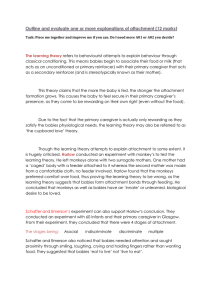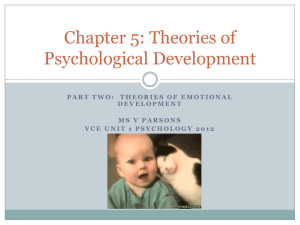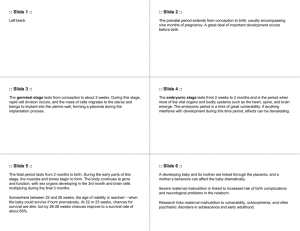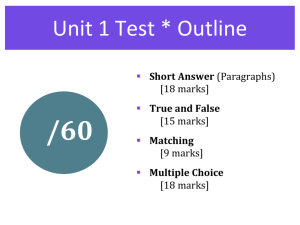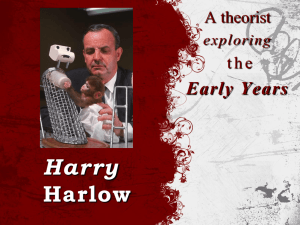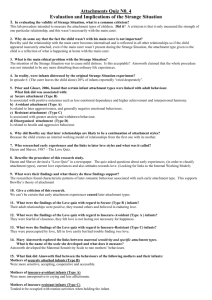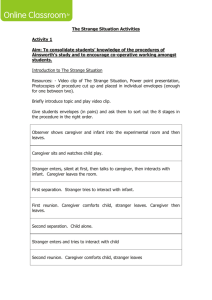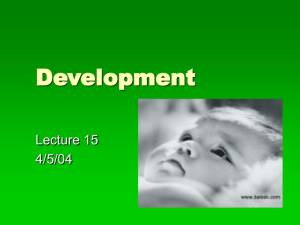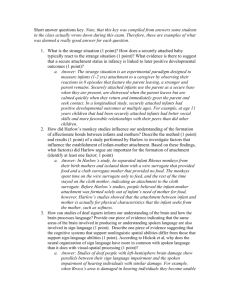12. PP Attachment Theories
advertisement
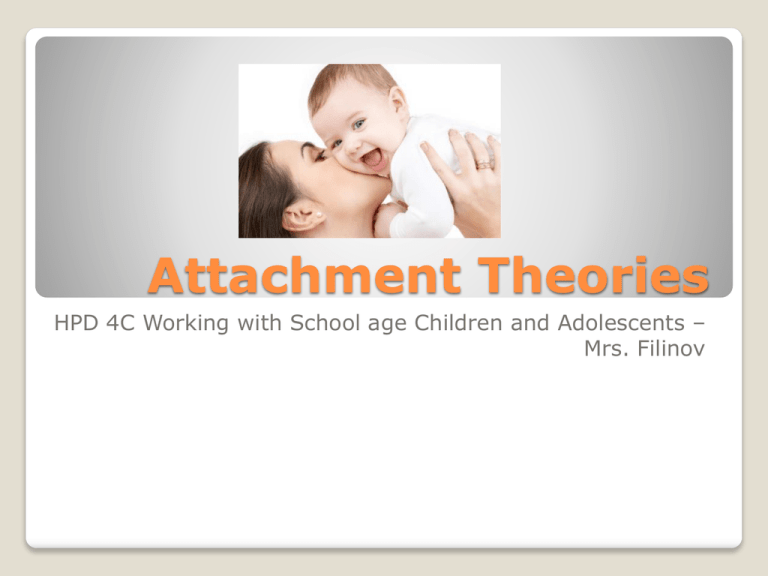
Attachment Theories HPD 4C Working with School age Children and Adolescents – Mrs. Filinov What happens to children who are deprived of affection and do not have the opportunity to bond with a caregiver at birth? Theorists have studied this effect and their research has show that human infants MUST form a strong connection with at least one caregiver to ensure normal development. The people who contributed to the development of attachment theory were Harry Harlow, John Bowlby and Mary Ainsworth. Dr. Harlow began studying the reaction of rhesus monkeys to separation from their mothers as a side effect of other research. He discovered that monkeys separated from their mothers, even when fed and cared for, developed abnormal behaviours and could not relate to other monkeys. Harry Harlow’s Monkey Research When they were provided with clothcovered mother substitutes, some of these abnormal behaviours were avoided. Harlow’s studies showed the importance of touch and contact for survival and normal development. John Bowlby studied actual children, during the 1060’s and 1970’s and identified that infants have a role in attachment by exhibiting “attachment behaviours”. These behaviours encourage adults to maintain closeness. John Bowlby Some of these behaviours include -proximity seeking -smiling -clinging These encourage adults to touch, hold and practice soothing responses. If children must be separated from their parents because of illness, for example, they go through three phases of separation behaviour: Protest: crying protesting, searching 2. Despair: the child becomes very quiet 3. Detachment: the child withdraws 1. Children who have had a secure bond with parents are able to move beyond the detachment stage. Less secure children do not adjust. When children go home they may regress, which means they act in an immature way in an attempt to re-establish their attachment. Mary Ainsworth is a graduate from the University of Toronto. She is known for studying mother-infant attachment in Uganda and Canada. She also worked with John Bowlby She showed that infants need a “secure base” from which to begin their exploration. Mary Ainsworth She discovered that infants will signal their caregiver with a cry, a wail, a glance or some other behaviour. The caregiver with a strong attachment to their children were better able to recognize these signals and take appropriate responses. This research supported the idea that the best way to encourage attachment with infants is to respond consistently to their needs. Infants communicate mostly by crying. Erik Erikson was another researcher that identified the need to respond to an infant’s cry. When a caregiver responds to an infants’ cry, they learn that the world is a secure place and develop a sense of trust. This sense of trust is their basis for lifelong social and emotional development. What did Harry Harlow’s experiment with baby monkeys show? Discussion Questions: Describe parental behaviours that would promote mistrust instead of trust in an infant. Suggest ways parents can reconnect with their children when they pick them up from childcare, nursery school or even a weekend visiting grandparents. What are some reconnection behaviours we exhibit with older children?
